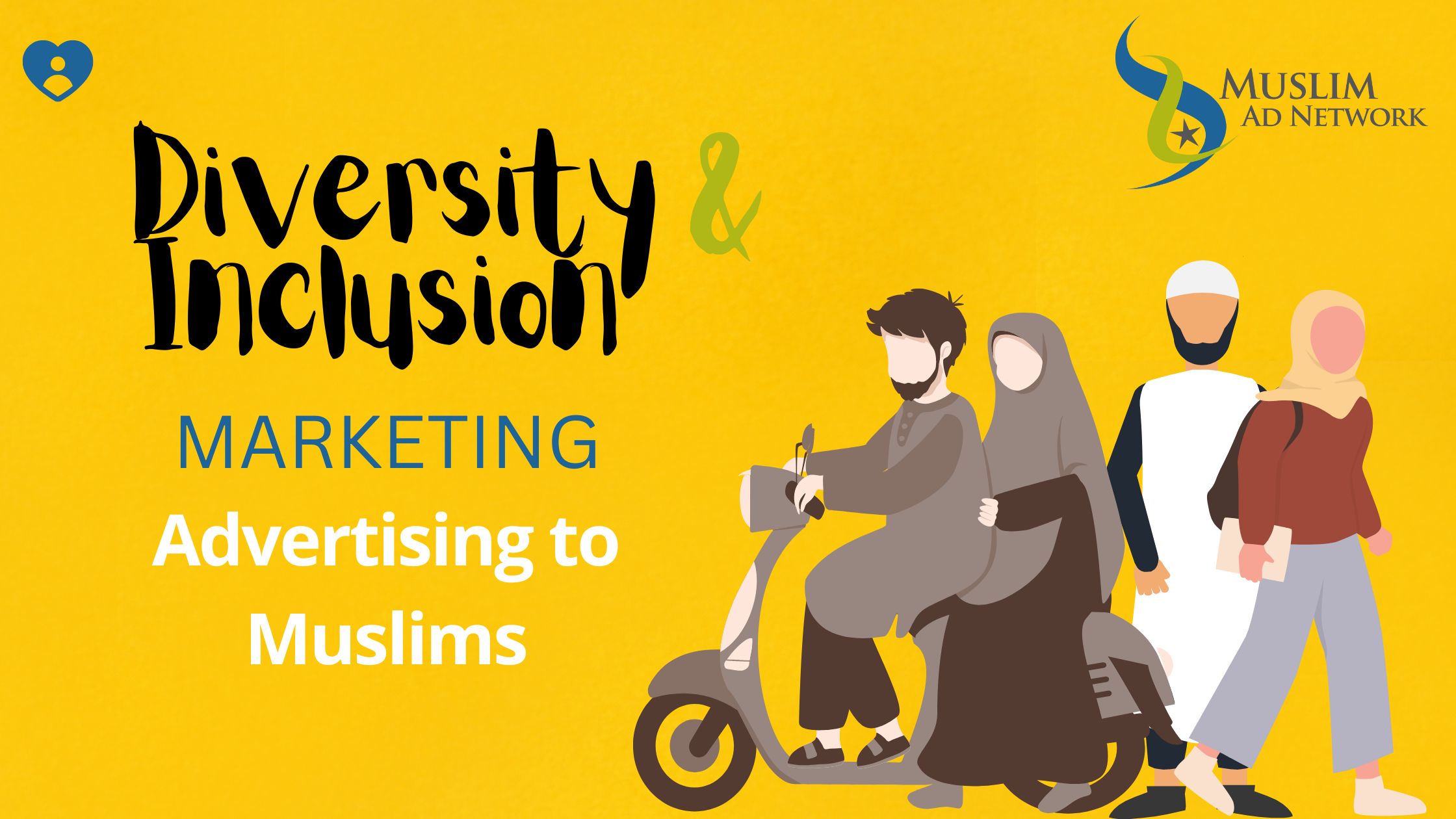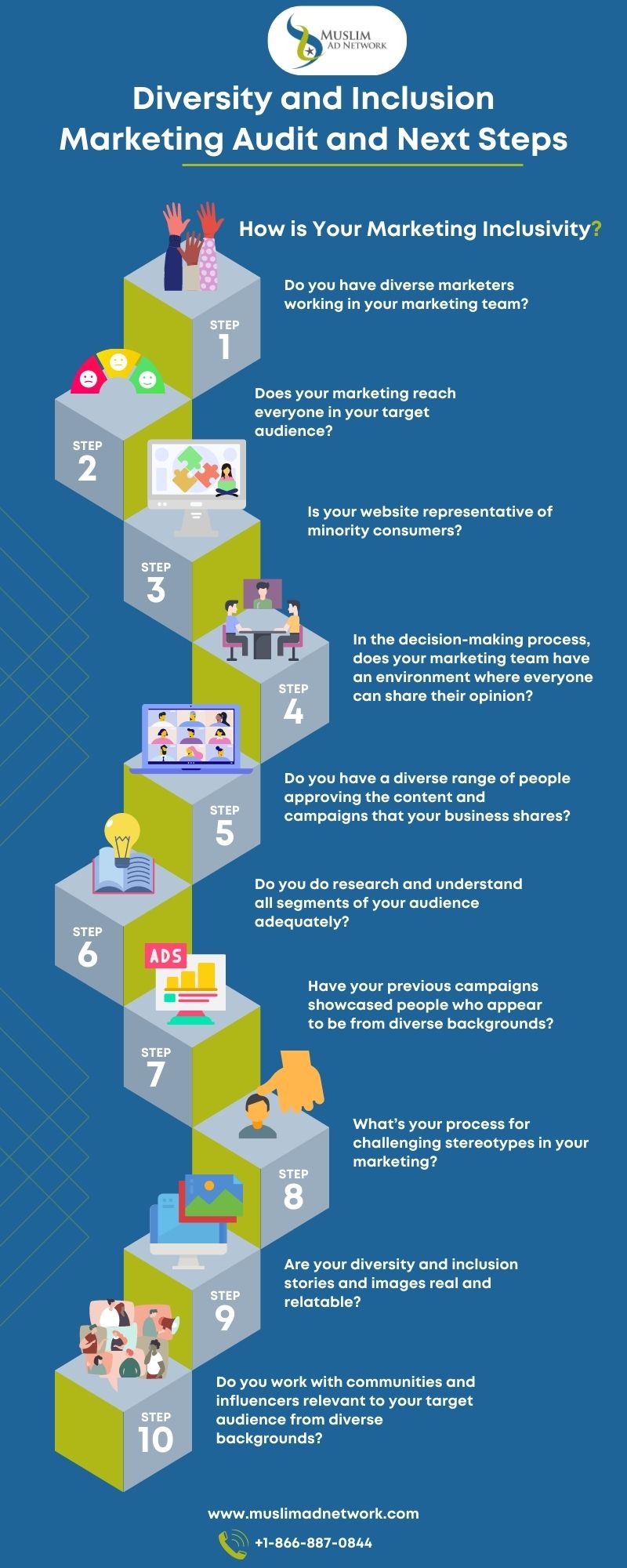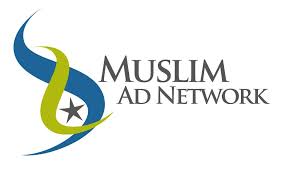
What is Diversity and Inclusion Marketing?
First, let’s understand what both words – diversity, and inclusion – mean.
Diversity refers to the traits and characteristics that make people unique while inclusion refers to the behaviors and social norms that ensure people feel welcome.
Source: builtin.com
Diversity and inclusion marketing recognizes that different cultures have different values, experiences, expectations, and mannerisms of communicating. Looking at minority cultures in the west like that of the Muslims, diversity marketing acknowledges the need to offer alternative ways of communicating to these diverse groups.
With that knowledge, brands and organizations develop a marketing mix and communication methods that cater to these diverse groups present in the market.
It’s about showcasing to the world what it is that you do without shutting the door in people’s faces.
Source: Ramat Tejani | Amazon Web Services
Why are Diversity and Inclusion Important in Your Marketing Efforts?
Simply put, if your target audience doesn’t feel that you see them, they will find someone else who does. This could mean missing out on business opportunities.
But it’s not just about making them feel seen, it’s how you make them feel when you see them.
Minority consumers are very advertising-savvy; they can spot the difference between an authentic message and a ‘just-add-the-hijabi-girl-to-the-banner’ type of message.
Consumers are increasingly noticing the brands and businesses who make a conscious effort to buck stereotypes and authentically represent all of their target audience. And similarly, consumers can see when a brand is exuding tokenism, misses the mark, or isn’t making an effort at all. This initiates action in the form of protesting with their pockets or speaking up on social media.
Source: Diversity is not a Marketing Strategy
A while back, we discussed marketing to Muslim consumers and not getting the cold shoulder. The article mentioned some of the well-crafted successful inclusion marketing campaigns and the not-so-well-crafted ones.
For the latter, we mentioned that you should not do it just for the sake of diversity and inclusion. This will feel like tokenism and even exploitation in order to sell more.
Diversity and inclusion offer your business an opportunity to penetrate new markets and generate new revenue. It allows your business or organization to target new populations and increase engagement.
How Does One Go About Creating a Diversity Marketing Campaign?
Adapting Your Message to the Market
For impactful diversity marketing, you need to adapt the message to the market, instead of trying to adapt the market to the message. So if you were to communicate to Muslim consumers, your message would need to be one that does not collide with their values.
Trying to force-feed them a message that does so in the spirit of being ‘OK’ because it’s cool for example, will not work. Recently Netflix did exactly this, when, in one of their shows, a Muslim woman broke her fast in a bar with alcohol. It was not received well to put it lightly.
A poor attempt in marketing and advertising that we see more often that entails trying to adapt the market to the message is developing an ad campaign first, and then trying to take on a multicultural aspect by adding a minority group member.
Your inclusion marketing campaign must start with the multicultural context in mind. You will not only need to research buying habits, but also values, ideals, perceptions, and methods of communication.
If you are looking to understand the Muslim consumers for your diversity marketing campaign, we recommend the following topics:
- Halal Marketing- All You Need to Know
- How Mainstream Brands Can Identify and Serve Muslim Niche Markets
- How to Build a Muslim-Friendly Brand
- 7 Simple Consumer Psychology Tactics to Gain More Muslim Customers
- How to Influence the 3 Types of Online Muslim Consumers
- What You Must Know About Islamic Advertising Principles
- The One Reason Every Brand is Failing to Capitalize on the Muslim Consumer Market Effectively
- 3 Ways of Cutting Through the Noise to Reach Muslim Consumers
The Right Knowledge and Combination of People in Your Team
Although your marketing team doesn’t need members of every minority group, nonetheless you should be actively recruiting talent from diverse perspectives or work with external consultants and agencies. For targeting Muslim consumers, Muslim Ad Network is the best option as it’s the first and biggest advertising network specializing in Muslim audiences.
Don’t be a brand or organization with a group of like-minded individuals who decide that an ad campaign looks good to them without consulting members of the minority group they are targeting.
Even if you have members of a minority group in your marketing team, it may not be enough. For instance, Muslims are so diverse, and some who call themselves progressive Muslims might have ideas that could create a negative impact and a backlash ( Netflix example).
So make sure you get your research right and understand where not to tread.
One of the biggest challenges brands have when it comes to producing effective inclusive marketing—particularly for diverse audiences, is the lack of cultural intelligence they have for the audience they are serving.
Source: Data Shows Consumers Want Diversity In Marketing—Why Many Brands Struggle To Get It Right And How To Fix – Forbes
This is not exclusive to Muslims but plays part in all minority groups and your inclusion campaign should be aware of this.
As a diversity campaign is developed, the profile of the target audience should also develop, and further diversify. Again, Hispanics are composed of many different subgroups. Similarly, there are many differences within black communities—they are not just a single, like-minded market group.
Source: Marketing Schools
Your entity must also create real contact with the Muslim communities. You will not only establish a reputation in the target group but you will also connect the business to community leaders. This will give you insider knowledge, a better context for communication methods, and the right expectations. So work alongside individuals inside the community to enhance the credibility of your business.
Diversity and Inclusion Marketing Audit and Next Steps

Audit your existing marketing to see if you are up to the standard required to engage minority consumers properly.
How is Your Marketing Inclusivity?
- Do you have diverse marketers working in your marketing team?
- Does your marketing reach everyone in your target audience? For example: If your ads are appearing on publisher sites that promote gambling or alcohol, you will miss out on a large part of the Muslim audience.
- Is your website representative of minority consumers?
- In the decision-making process, does your marketing team have an environment where everyone can share their opinion?
- Do you have a diverse range of people approving the content and campaigns that your business shares?
- Do you do research and understand all segments of your audience adequately?
- Have your previous campaigns showcased people who appear to be from diverse backgrounds?
- What’s your process for challenging stereotypes in your marketing?
- Are your diversity and inclusion stories and images real and relatable?
- Do you work with communities and influencers relevant to your target audience from diverse backgrounds?
Are you happy with your answers to the above questions? Every business, organization, and brand has room for improvement, and here are some steps you can take to help you with that.
Steps for Better Diversity and Inclusion in Your Marketing
- Foster the similarities between members in your audience. That way, your marketing message covers a larger scope with a single message.
- Make sure you have an accurate representation of the minority groups you are targeting involved in the approval phase. Even better than that, they should be involved in the early stages of your campaign.
- Upskill your team in diversity marketing. Send them for training to learn more about minority groups, cultural competency, and more.
- Use inclusive copy and check your tone.
- Make sure your imagery and representation are not playing into stereotypes.
- Remember that diversity, representation and inclusion are not about a “diverse” image or person in a marketing campaign, that is simply tokenism.
- Share your platform with people from the targeted minority group.
We mentioned earlier how marketing to minority groups opens up new business opportunities and revenue streams. The global Islamic economy reached $2.1 trillion in 2017 and is expected to reach $3 trillion in 2023. Let us help you target the Muslim minority consumer group today. Contact Muslim Ad Network for more information.
start targeting muslim consumers